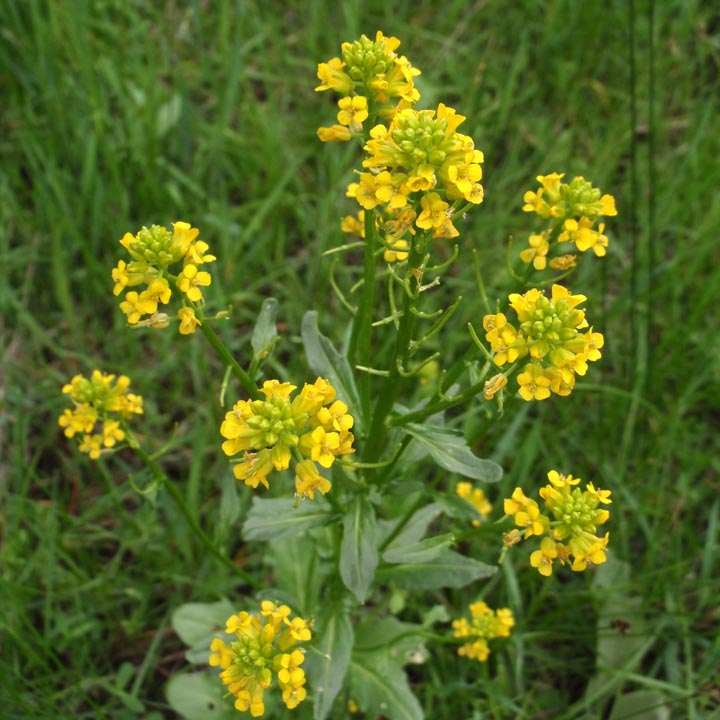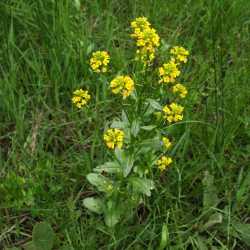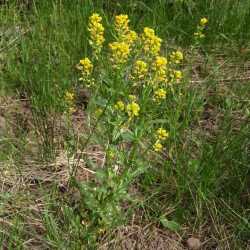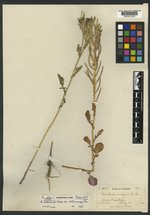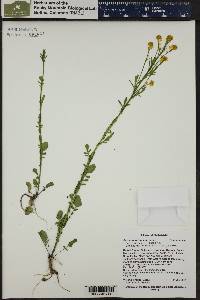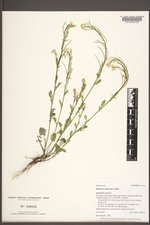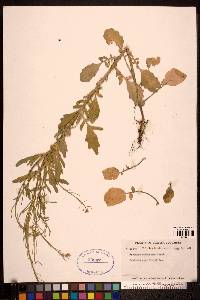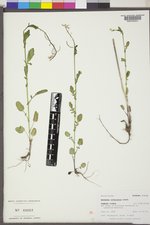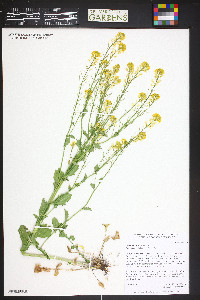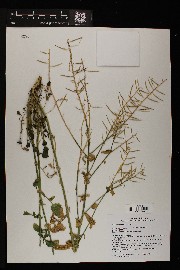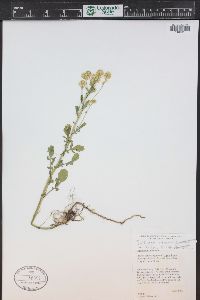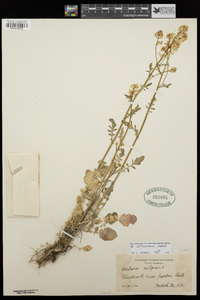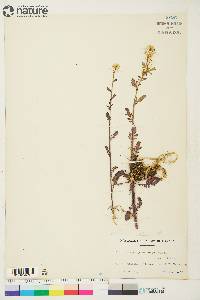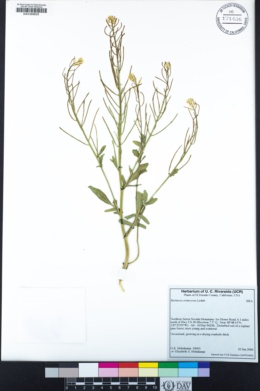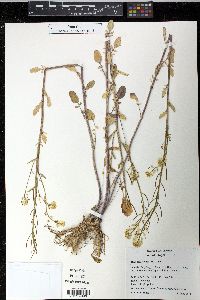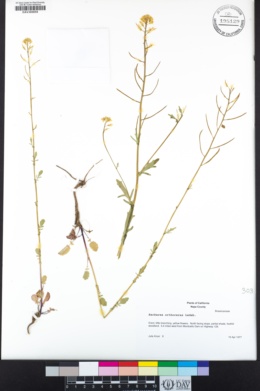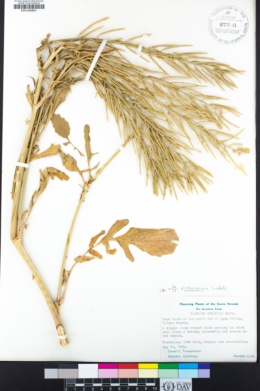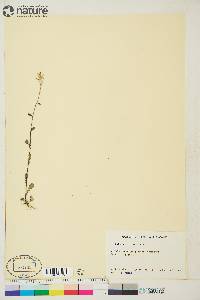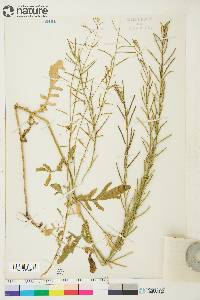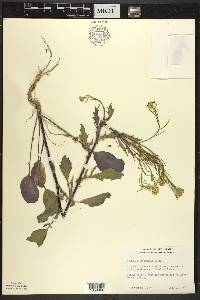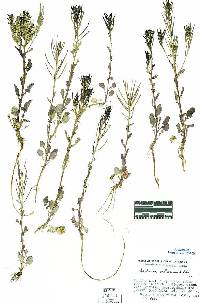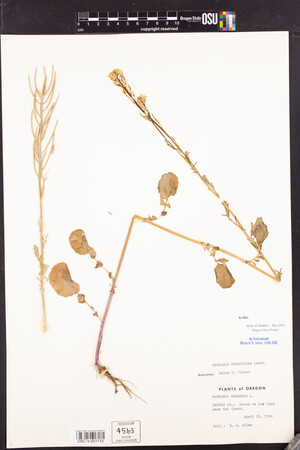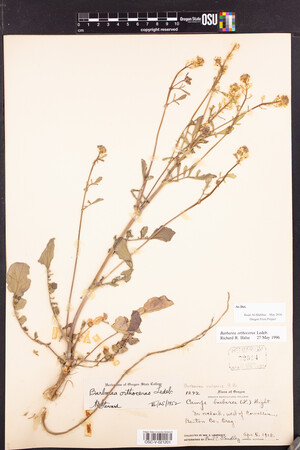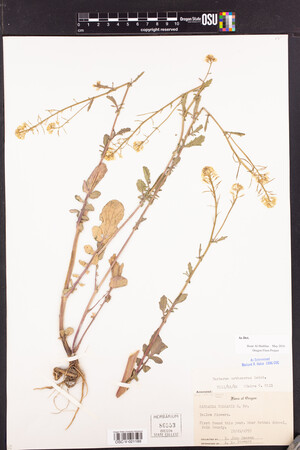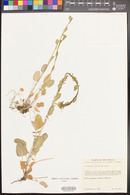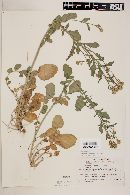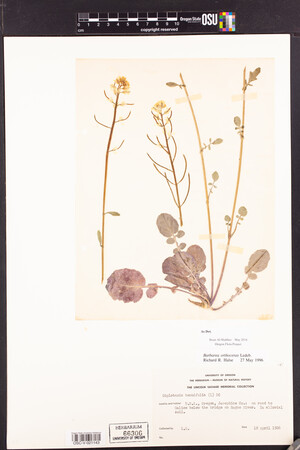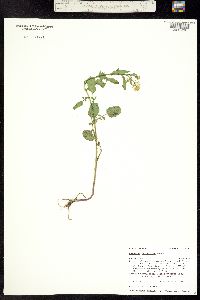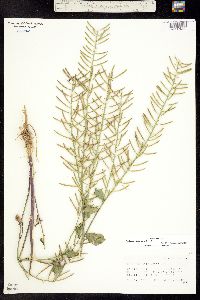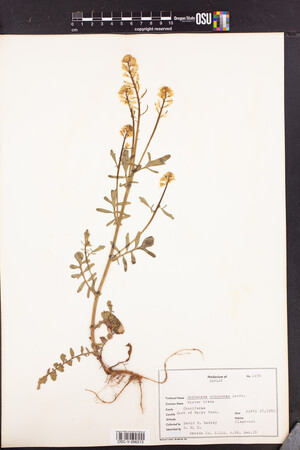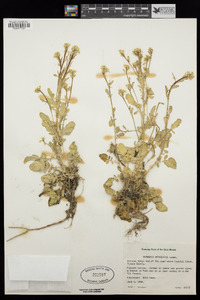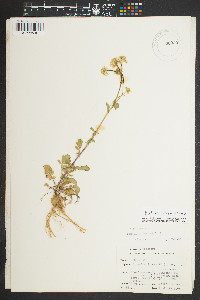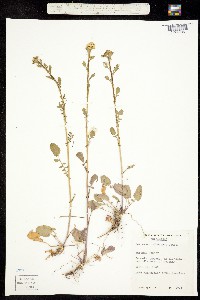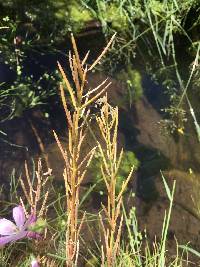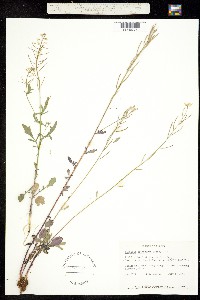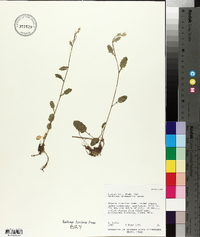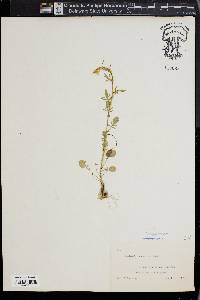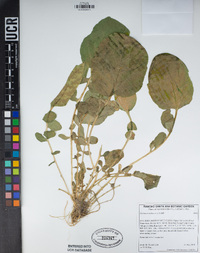
|
|
|
|
Family: Brassicaceae
American Yellow-Rocket, more...American yellowrocket, erectpod wintercress, wintercress
[Barbarea americana Rydb., moreBarbarea orthoceras var. dolichocarpa Fern., Barbarea orthoceras var. orthoceras] |
Biennials or perennials; usually glabrous, except blade auricles often ciliate. Stems (1-)2-6 (-10) dm. Basal leaves: petiole (0.5-)1-7(-15) cm, (rarely ciliate basally); blade usually lyrate-pinnatifid, (1-)1.5-6(-11) cm, lobes (0, 1, or) 2-4 (or 5) on each side, lateral lobes oblong or ovate, 0.2-1 cm × 1-5 mm, not fleshy, margins entire, terminal lobe 1.5-5 cm × 10-25 mm. Cauline leaves: blade usually lyrate-pinnatifid (sometimes undivided and margins coarsely toothed or subentire), lateral lobes 1-4, (usually oblong or ovate, rarely lanceolate, to 2 × 1 cm), margins entire, (terminal lobe to 5 × 3 cm, margins usually entire or repand, rarely dentate); conspicuously auriculate, auricles ovate or narrowly oblong, (to 8 × 5 mm, margins entire). Fruiting pedicels erect or ascending, (2-)3-6(-7) mm, terete or subquadrangular, stout, (narrower than fruit). Flowers: sepals 2.5-3.5 × 1-1.5 mm, lateral pair slightly saccate basally, margins scarious, (subapically sparsely pubescent or glabrous); petals yellow or pale yellow, oblanceolate, 5-7(-8) × (1.5-)2-3 mm, base attenuate, apex rounded; filaments 3-4.5 mm; anthers 1 mm; ovules (24-)26-36 per ovary; gynophore to 0.5 mm. Fruits erect to erect-ascending, rarely appressed to rachis, torulose, terete to subquadrangular, (2.5-)3.1-4(-4.5) cm × 1.5-2 mm; style stout, 0.5-1.2(-2) mm. Seeds brown, somewhat plump, ovoid or oblong, 1.2-1.5 × 0.9-1 mm. 2n = 16. Flowering Mar-Jul. Open grassland, sandbars, scree, alpine meadows, ledges, rocky cliffs, forests, streamsides, railroad embankment, boggy ground, gravel pits, moist grassy slopes; 0-3400 m; Alta., B.C., Man., N.B., Nfld. and Labr., N.W.T., Ont., Que., Sask., Yukon; Alaska, Ariz., Calif., Colo., Idaho, Maine, Mich., Minn., Mont., Nev., N.H., N.Mex., Oreg., S.Dak., Utah, Wash., Wyo.; e, c Asia. M. L. Fernald (1909) reported the southwestern Asian Barbarea plantaginea de Candolle from Alaska, but it is certain that his records were based on plants of B. orthoceras, which is rather rare in New England, where it appears to be restricted to portions of northern Maine and New Hampshire.
Martin and Hutchins 1980, Welsh et al. 1993, Kearney and Peebles 1969 Duration: Perennial Nativity: Native Lifeform: Forb/Herb General: Erect glabrous perennial to biennial, 15-100 cm tall, stems stiffly erect. Leaves: Basal leaves lyrate-pinnatifid to pinnately compound with 2-10 small lateral lobes and enlarged broadly oblong terminal lobe, blade mostly 4-15 cm long, 1-2.5 cm wide, glabrous; cauline leaves reduced upwards, auriculate-clasping. Flowers: Racemes with flowers on pedicels 2-4 mm long, ascending, sepals 2.5-3.5 mm long, yellowish, 4 petals 4-5.5 mm long, yellow, spatulate to oblanceolate, ascending-spreading. Fruits: Siliques appressed, 2-4 cm long, not sharply contracted. Ecology: Found in moist soils of meadows and along streams from 5,000-10,000 ft (1524-3048 m); flowers June-September. Notes: One distinctive character of this plant is how glabrous it is. Ethnobotany: The rosettes were cooked or eaten raw as salad. Etymology: Barbarea is named for St. Barbara, while orthoceras is from Greek for straight, upright and horn. Synonyms: Barbarea americana, Barbarea orthoceras var. dolichocarpa Editor: SBuckley, 2010 Stems simple or branched above, 3-8 dm; basal lvs simple or with 1-4 pairs of lateral lobes; middle and upper lvs deeply toothed or lyrately lobed, often with 3 or 4 pairs of lfls; pet 3-5 mm; mature pedicels clavate-thickened, to 1 mm; frs erect to spreading, 2-4 cm, the beak 0.5-1.5(-2) mm; 2n=16. Swamps and wet woods; circumboreal, s. in Amer. to Me., N.H., Ont., and Calif. June-July. (B. americana) Gleason, Henry A. & Cronquist, Arthur J. 1991. Manual of vascular plants of northeastern United States and adjacent Canada. lxxv + 910 pp. ©The New York Botanical Garden. All rights reserved. Used by permission. |
This project was made possible in part by the Institute of Museum and Library Services [MG-70-19-0057-19].
Powered by Symbiota

